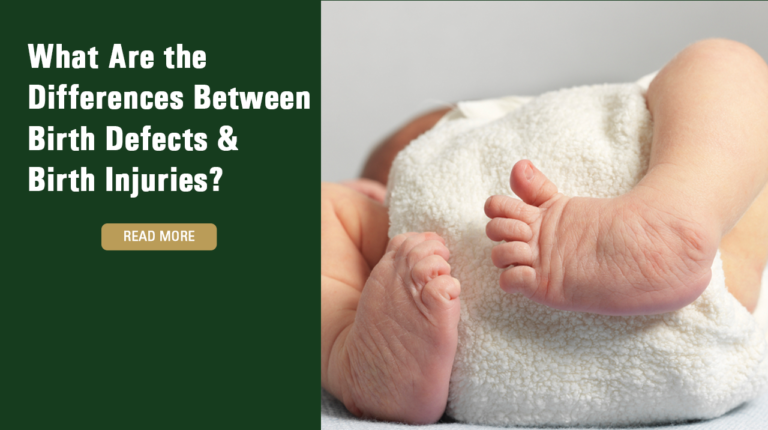Dayton, Ohio, is a city shaped by innovation, resilience, and a strong sense of community. Known for its rich history in aviation and industry, it is also home to leading hospitals and healthcare providers serving families across the region. For expectant parents, Dayton offers quality medical care, but even in the best facilities, complications can arise during childbirth. When a medical error leads to a birth injury, the consequences can be devastating, altering the course of a child’s life and placing an immense emotional and financial burden on families.
Birth injuries, unlike congenital conditions, often result from preventable medical mistakes during labor and delivery. Oxygen deprivation, improper use of forceps, or failure to respond to distress signals can lead to serious conditions such as cerebral palsy, Erb’s palsy, or brain damage. Families facing these challenges may feel overwhelmed, unsure of their legal rights, and concerned about their child’s future. Understanding the difference between birth defects and birth injuries is critical when seeking justice. If you suspect that medical negligence played a role in your child’s condition, a Birth Injury Lawyer in Dayton can provide the guidance needed to pursue the compensation and care your family deserves.
Characterizing Congenital Anomalies
Congenital anomalies are functional irregularities that exist from birth onwards and can arise from predispositions or environmental factors or both working together in tandem. A few typical instances include heart defects, cleft lip, and Down syndrome. Congenital anomalies typically manifest during gestation and are not directly attributable to neglect or mistakes. Legal disputes surrounding anomalies frequently revolve around whether external factors have worsened the situation or whether medical experts have delayed diagnosis.
Getting to Grips With Birth Injuries
On the other hand, birth injuries happen while a baby is being born because of mistakes made by professionals or unexpected issues arising during delivery. These injuries can range from nerve damage to broken bones or conditions like Cerebral Palsy. When such incidents occur, the attention turns to the decisions or oversights of healthcare providers. Legal processes typically seek to determine whether lack of care or below-par treatment played a role in causing the injury. Proving negligence requires showing that a medical provider did not meet the expected standard of care in the circumstances.
The Legal Ramifications
Differentiating between birth defects and birth injuries carries severe consequences in the legal realm. In instances of birth defects, the situations may center on lawsuits against companies or environmental influences. Claimants might assert that their exposure to certain elements caused the defect. Contrarily, birth injury cases usually entail allegations of negligence, demanding evidence of wrongdoing. This differentiation impacts the approaches used and the individuals deemed responsible.
The Importance of Evidence
In legal proceedings concerning birth defects and birth injuries, the most important evidence comes from genetic testing and medical documentation, alongside expert opinions to determine the cause and the severity of the defect itself. In situations involving birth injuries specifically, obtaining evidence, such as medical records from labor and delivery processes along with testimonies regarding medical standards of care, plays a critical role in presenting a solid case. It is crucial to gather a body of evidence to support the construction of a strong legal argument.
The Effects on Families
Dealing with birth defects or injuries can bring financial strain to the families involved in such situations. Knowing the differences can help families in getting the compensation and assistance they need. In cases of birth defects, families may seek help with medical bills and ongoing care. On the other hand, birth injury cases typically seek compensation for medical expenses, rehabilitation, and emotional suffering. The legal results play a huge role in determining how well families can take care of their children’s needs.
Understanding Legal Procedures
When families set out on journeys involving birth-related cases, they face processes that can be challenging to navigate. It is essential to seek the assistance of experts who are well-acquainted with medical malpractice or product liability cases. These attorneys play a major role in assisting families with collecting evidence, submitting claims, and negotiating settlements. By having access to professional guidance, families are empowered to make sound decisions at each step of the process.
Difficulties Encountered in Legal Proceedings
Legal disputes related to birth abnormalities and harm pose several hurdles to overcome. Determining causality in cases of birth abnormalities can be complex due to the various factors involved. Proving negligence in instances of birthing injuries requires countering justifications and proving a connection between the healthcare professionals’ conduct and the harm faced by the individual. These obstacles highlight the importance of groundwork and skilled legal support.
In Summary
It is important to distinguish between birth defects and birth injuries in legal matters as they influence approaches and responsibility while affecting families’ future outcomes significantly. Collaboration among experts and advocates alongside families is essential to secure justice and provide assistance to the affected individuals. Equipping families with information and legal advice paves the way for resolving issues and promoting healing during difficult circumstances.

